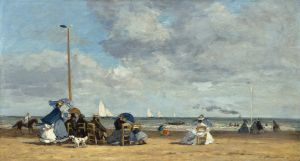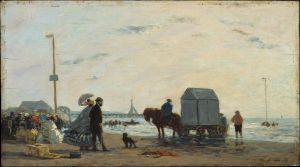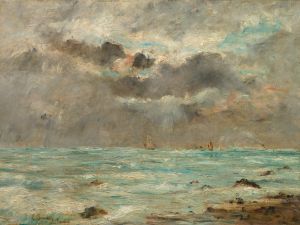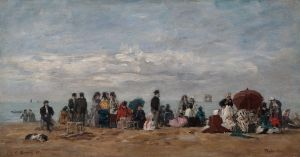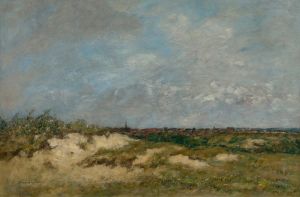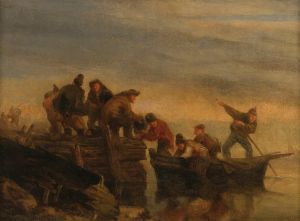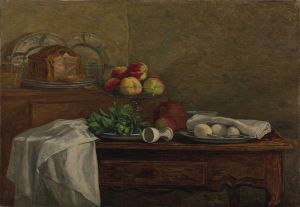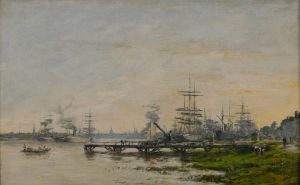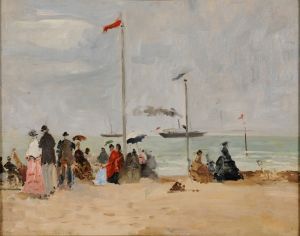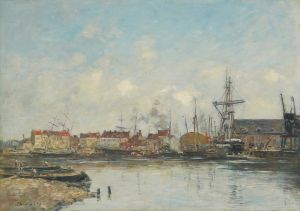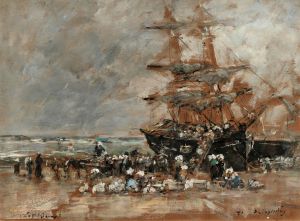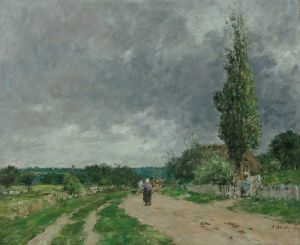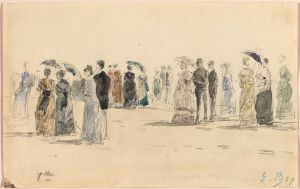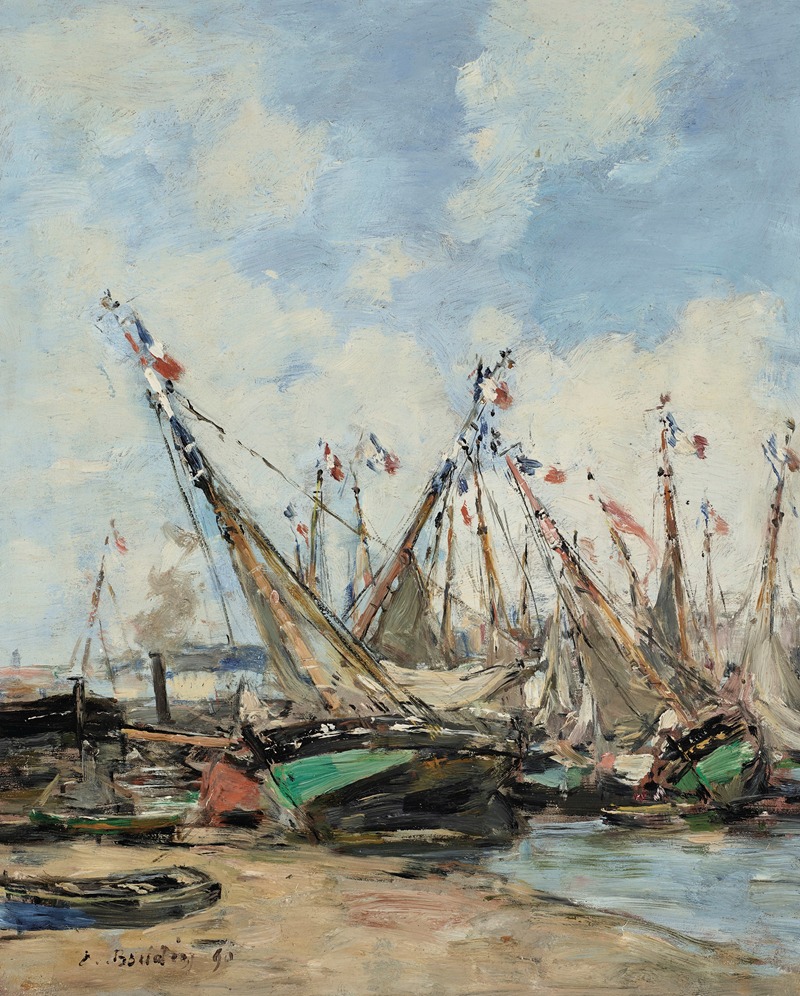
Trouville, le port, voiliers échoués
A hand-painted replica of Eugène Boudin’s masterpiece Trouville, le port, voiliers échoués, meticulously crafted by professional artists to capture the true essence of the original. Each piece is created with museum-quality canvas and rare mineral pigments, carefully painted by experienced artists with delicate brushstrokes and rich, layered colors to perfectly recreate the texture of the original artwork. Unlike machine-printed reproductions, this hand-painted version brings the painting to life, infused with the artist’s emotions and skill in every stroke. Whether for personal collection or home decoration, it instantly elevates the artistic atmosphere of any space.
Eugène Boudin, a French painter born in 1824, is widely regarded as one of the precursors of Impressionism. His works often depicted coastal scenes, harbors, and the daily life of seaside towns, showcasing his mastery in capturing the interplay of light, water, and sky. One of his notable works, Trouville, le port, voiliers échoués (translated as Trouville, the Port, Beached Sailboats), exemplifies his dedication to portraying maritime life with remarkable detail and atmosphere.
This painting is set in Trouville-sur-Mer, a coastal town in Normandy, France, which was a frequent subject in Boudin's oeuvre. Trouville was a popular destination for artists and tourists during the 19th century, and its bustling port and picturesque scenery provided ample inspiration for Boudin. The painting depicts a serene moment at the port, with sailboats resting on the shore, likely at low tide. The composition highlights Boudin's ability to render the subtle effects of light and weather, as well as his keen observation of the natural environment.
Boudin's technique in this work reflects his characteristic loose brushwork and attention to atmospheric conditions. The sky, a dominant feature in many of his paintings, is rendered with soft, blended hues, suggesting a calm and overcast day. The muted tones and delicate transitions between light and shadow create a sense of tranquility, inviting viewers to immerse themselves in the scene.
As with many of Boudin's works, Trouville, le port, voiliers échoués demonstrates his interest in capturing the ephemeral qualities of nature. His focus on the everyday activities of the port and the interplay between human activity and the natural world aligns with the broader themes of the Barbizon School and the emerging Impressionist movement. While Boudin is often associated with Impressionism, he maintained a unique style that bridged the gap between traditional landscape painting and the more experimental approaches of his contemporaries.
The exact date of creation for this painting is not specified, but it is consistent with Boudin's prolific output during the mid-to-late 19th century. Today, his works, including this piece, are celebrated for their contribution to the development of modern landscape painting and their influence on artists such as Claude Monet, who regarded Boudin as a mentor.
Trouville, le port, voiliers échoués is a testament to Boudin's skill in capturing the beauty and simplicity of coastal life. It remains an important example of his artistic legacy and his role in shaping the trajectory of French art in the 19th century.





